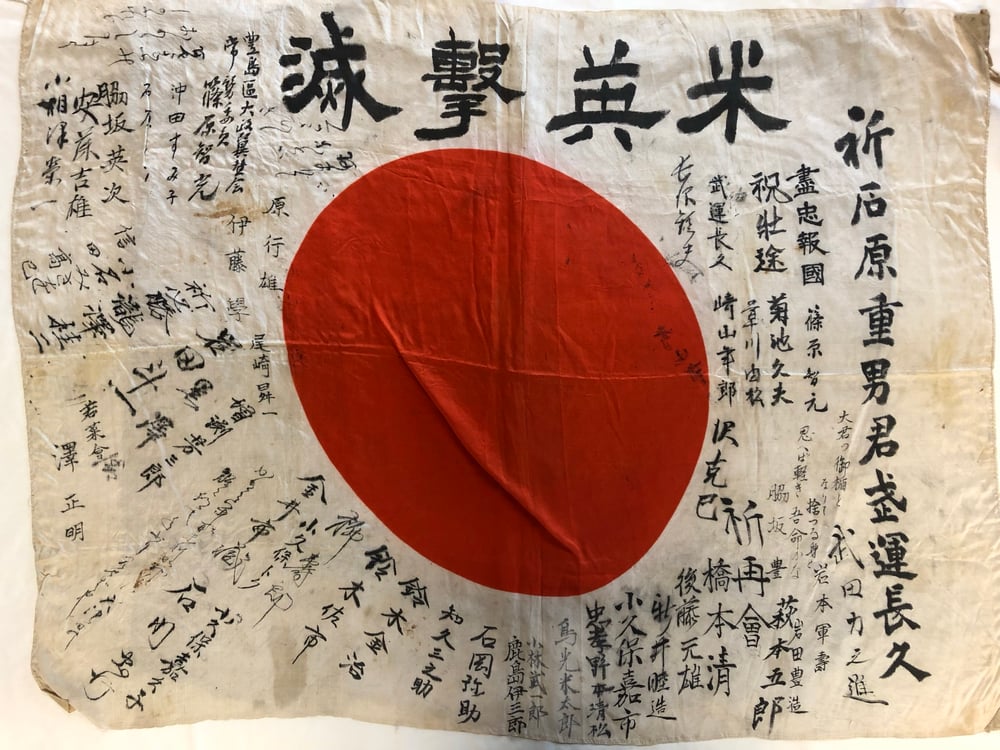Imaginative Investments in the Past: Material Culture, Affect, and Memory of the Pacific Theater of WWII

The Origin Story
One day, while I was working as an intern at the Japanese Consulate-General of San Francisco, I came across a small cardboard box that had been lost in storage. The box had the words “WWII Artifacts” written on it. Immediately intrigued, I opened the box to find a slightly yellowed Japanese flag, with the red “Rising Sun” in the middle. There was a small, rust-brown stain on it. I immediately imagined that it could be blood. I realized I was touching a piece of history and handled the flag as carefully as possible. There was also a long, tan bag with Japanese characters on it; what I later discovered to be an ammunition bag. It was clear that the items had belonged to a Japanese soldier. I wondered what had happened to him. Had he lived, or died? Did his family ever know his fate?
I also wondered how the items had come to be at the Japanese Consulate. It seemed likely they were given to the Consulate by an American veteran or his relative, but there was unfortunately no record I could find. I felt a strong desire to try to return the objects to Japan – perhaps even locate a relative. When this proved difficult, as there was no name or identifying information on the objects, I researched museums in the U.S. that might accept them. I wanted them to go to the “right” place – somewhere where they would be treated with respect as the items of a soldier who had likely died in battle.
My reaction to the war “artifacts” – my instant fascination and simultaneous revulsion – illustrates the imaginative and affective power of objects to link us to the past. I didn’t know who the solder was – and probably will never know. Yet, at least for a moment, I felt connected to him across time and space. I didn’t know it then, but that imaginative link was one I would come to explore years later as this dissertation project.
Later, after discovering the work of Obon Society, I learned that many Americans had attempted to return such objects to families in Japan.
As I began my research, I had three driving questions:
1. How have Japanese and American families used war-related objects to help mediate and reinterpret a painful past?
2. How does the mediation of material objects influence narratives of the war on both an individual and societal level?
3. What kinds of new narratives of the war are formed through the return of war souvenirs from the former enemy?
Ultimately, through studying these material objects and their exchanges, I reveal that memory of WWII in Japan and the United States is more nuanced, individualized, and transnationally connected than much of the previous scholarship has recognized. I argue that the return of personal war souvenirs creates opportunities for both the returning parties and the recipients to reframe their relationships to the war past in ways that challenge official and national-level narratives of World War II and the conceptions of “the enemy” that circulated in the 1940s. Through these processes, participants instead build new transnational narratives of war based on mutual empathy.